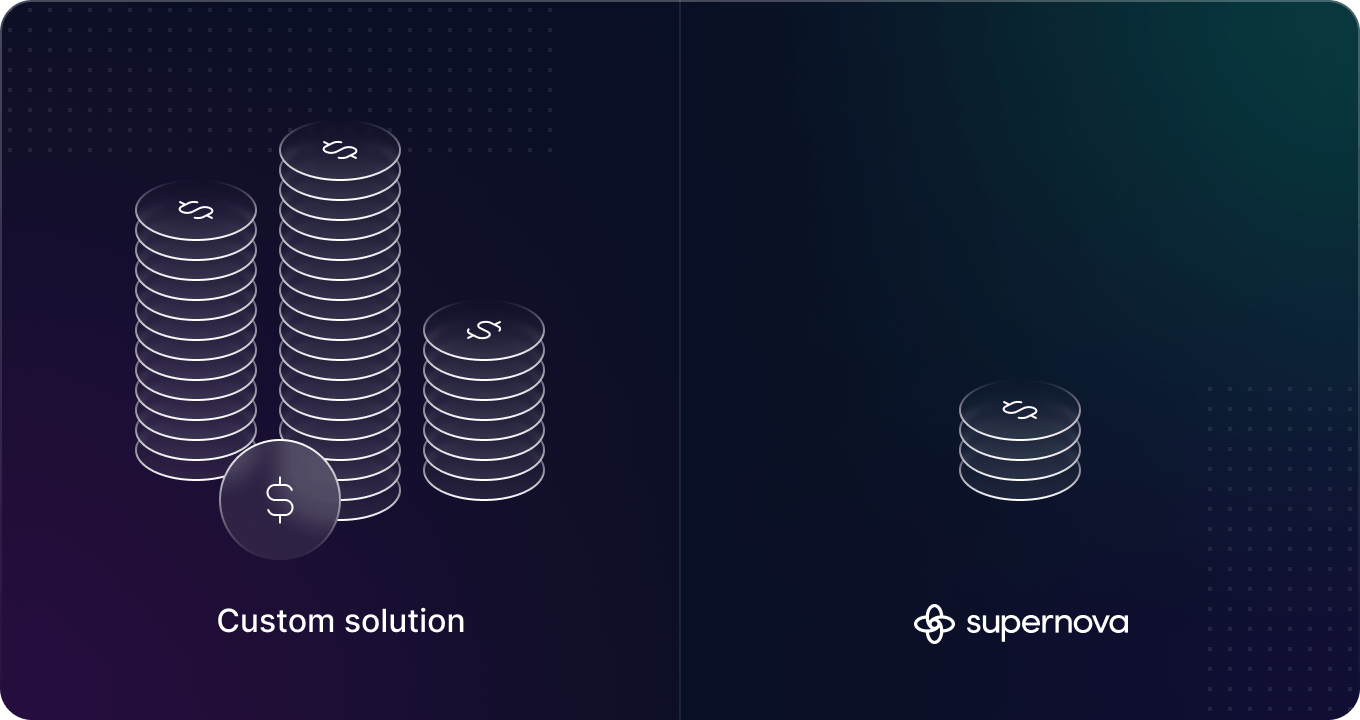
How to Build a Business Case for Your Design System
Explore strategies and insights to build a compelling business case for a design system. Learn how to articulate costs, benefits, and the ROI to secure budget and buy-in.

Explore strategies and insights to build a compelling business case for a design system. Learn how to articulate costs, benefits, and the ROI to secure budget and buy-in.
Building a design system is a great way to improve your team's product development and workflow. Despite the well-documented benefits, there is still a cost when it comes to building one. Securing the necessary buy-in for such an initiative requires a well-crafted business case that convincingly communicates the value and ROI of a design system. This guide will equip you with the insights and strategies needed to build a strong business case and secure the budget for a design system built using Supernova.
Before diving into the technicalities, it's essential that you first identify and understand the stakeholders involved and what they care about. These typically include C-suite executives, product managers, engineering team leads, and design directors — each with their unique perspectives and concerns. Here's an example of how you can cater your business case to different stakeholders:
Knowing who is in charge of budgets and approvals is also critically important. If your design directors are on board, but your Chief Product Officer doesn't see it as the best use of resources, you'll struggle to get the approval for it. Understanding these stakeholders' priorities enables you to tailor your business case, making it more relevant and compelling.
But don't worry, we're here to help you prep and present all the information you need to get everyone in your organization excited about design systems.
The best way to start creating a convincing argument for a design system begins with identifying the problems you're facing and tying them to how they're affecting business goals. As a designer or developer, you're likely encountering problems that a design system could solve. That typically involves inefficient workflows, handoff problems, and final product inconsistencies. The goal is to connect this problem to the solution (a design system) through data and numbers that show that this is a worthwhile business endeavor. This includes:
Now that we understand the core challenges a design system can solve, it's time to get into the numbers. At the end of the day, the thing a business will care about the most is the return on investment they would get from the design system. This is more relevant than ever now with companies tightening belts and focusing on profitability. It also makes a big difference to smaller teams that don't necessarily have a lot of resources to invest in a design system. Check out Matt Gottschalk's talk at Config about business cases for smaller teams and calculating their ROI.
In the context of design systems, the investment includes the resources spent on creating and maintaining the system. Traditionally, this involves substantial input from designers and developers, which can be costly and time-consuming.
The biggest bulk cost when it comes to a design system is the upfront cost of building one. A good design system needs a documentation site, a way to manage design data, and a hand-off process. According to Smashing Magazine, building a custom design system takes at least 6 months. Depending on the scale of your team and design system, you need dedicated design and engineering resources to build it, with a minimum of one each. Calculating their average salaries x the amount of dedicated time to build a design system will get you the initial costs.
You also need to factor in any outside tools that you might need. Do you need to add Storybook for developer documentation, Tokens Studio for managing tokens, or a CMS for your custom site like Netlify? All of these come with their extra costs.

Alternatively, Supernova helps you save dramatically on initial setup costs. We remove the need for a dedicated team to build a design system, giving you all the tools you need out of the box while still giving you the ability to customize it as your own. You also speed up time to launch from 6 months to under 2 months.
Check out How Userlane Kickstarted Their Design System Using Supernova.
You also need to forecast the budget needed for the continuous evolution of the design system. Smashing against estimates, maintenance takes up at least a month per year from teams. You must also consider changes in the industry and tools you're integrating with. Figma recently released variables changing how many teams manage their tokens, but migrating to them can prove really costly for custom design systems.

Supernova being a third-party tool, offsets the maintenance costs and even provides constant new updates and features that cost nothing extra. This helps significantly lower these costs by reducing the need for extensive manpower and facilitating easier updates.
From Smashing's same study, averaging results from multiple design systems, the efficiency gain is 38% for design teams and 31% for development teams. This echoes the same results we've analyzed from users gaining 33% efficiency in their product workflow. Supernova also adds another layer of gains by saving teams up to 1 day per week and doubling the speed of onboarding new users. Similarly, in Matt's Config talk, his data calculated that designers would gain 30% efficiency while engineers would gain 25%.
Using the example calculation in the same Smashing Magazine article, the ROI for a custom design system is estimated to be 135% over five years, considering both the setup and maintenance phases.
However, when leveraging Supernova, the economics change dramatically. Supernova streamlines the process, allowing design systems to be set up in significantly less time — less than two months compared to six — and with fewer personnel costs. Instead of a full team, only the practitioners who will use the system are needed.
Here’s a quick breakdown of the numbers:
Traditional Custom Design System: Requires a full team for setup and ongoing maintenance, with an example ROI of 135% over five years.
Supernova Approach:
Using these figures, the total cost for building and maintaining a design system with Supernova is approximately $97,600, compared to Smashing's calculation of the same example of a whopping $650,000.
With Supernova, the ROI skyrockets — to be nearly 7 times the ROI of a custom-built system, based on Smashing's example calculations.
Now that we have our numbers in order, the last step is establishing a realistic timeline for implementing your design system.

Phase 1 - Planning and Research (~2 months): Stakeholder interviews, existing assets audit, and planning for the scope of the design system.
Phase 2 - Implementation (~6 months for custom or ~2 months using Supernova): Working on the design and development of the design system and migrating towards it.
Phase 3 - Rollout (Up to a year): Training and onboarding new and old team members on the new design system. This involves setting up office hours, training sessions, and reviews with stakeholders on the status of the design system. While this is a continuous process that doesn't stop, you should set a target for benchmarking progress.
For each phase, you should identify clear milestones, such as completing the design system's core components and the first project launch using the system. These will help communicate with all your stakeholders and users what they can expect out of your design system.
With all the prep work done, let's start creating our actual business case. If your company has a specific template, then just plug in all the information you've prepped; otherwise, this is a common template for how to structure your business case:
Don't forget to follow general presentation best practices when preparing your business case, like tailoring your presentation to your audience, using visual aids, being concise and to the point, and making it branded.
Find out how Supernova can help your team get a better ROI with your design system while helping you scale by scheduling a demo with us.